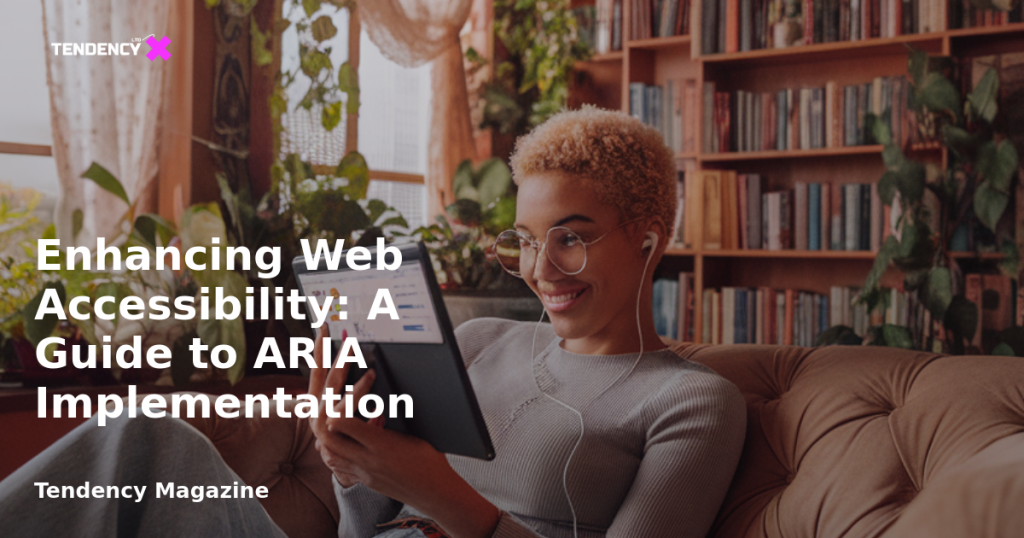Enhancing Web Accessibility: A Guide to ARIA Implementation

Table of Contents
- Understanding ARIA
- Importance of Web Accessibility
- How ARIA Enhances Accessibility
- The Mechanics of ARIA
- Best Practices for ARIA Implementation
- Frequently Asked Questions about ARIA
- Conclusion
Understanding ARIA
Accessible Rich Internet Applications (ARIA) are a set of attributes that can be added to HTML elements to improve accessibility for users of assistive technologies, such as screen readers. ARIA is particularly beneficial for dynamic or custom web interfaces that feature interactive or changing content. It helps identify elements like clickable buttons or dialog boxes and explains the state of dynamic components, such as drop-down menus.
The World Wide Web Consortium (W3C) develops and maintains ARIA standards through its Web Accessibility Initiative (WAI). While the W3C doesn’t enforce compliance, its recommendations inform accessibility laws and guidelines in many countries.
Importance of Web Accessibility
Web accessibility is vital for individuals with disabilities who rely on the internet for essential resources. It ensures that people with visual, hearing, mobility, or cognitive disabilities can access web content as independently as those without disabilities. In the United States, web accessibility is a civil right under the Americans with Disabilities Act (ADA), which mandates equal access to businesses, including those online.
Effective web accessibility benefits everyone, often improving usability for all users, such as those on mobile devices or with low bandwidth. From a business perspective, an accessible website expands your audience, as 15% of the global population has a recognized disability. Catering to these needs can enhance customer loyalty and increase sales.
How ARIA Enhances Accessibility
ARIA significantly improves accessibility by allowing screen readers and other assistive technologies to understand the functions of custom web elements. It defines roles and behaviors, describes dynamic changes, and clarifies the relationships between visual elements. ARIA also communicates hidden or inactive states, reducing clutter for users relying on screen readers.
The Mechanics of ARIA
ARIA adds layers of meaning to web elements through roles, states, and properties, ensuring users have a comprehensive understanding of a page’s content.
ARIA Roles
Define what an element is or its purpose. For example, `role=”button”` signals a screen reader that an element behaves like a button, while `role=”dialog”` identifies a modal window.
ARIA States
Describe conditions that change with interaction. For instance, `aria-pressed=”true”` indicates a button is toggled on, while `aria-expanded=”false”` shows a collapsed menu.
ARIA Properties
Provide additional context about elements. The `aria-label` creates an accessible name for an element, while `aria-labelledby` links to another element that labels it. `aria-describedby` points to descriptive text, and `aria-controls` indicates that an element controls another.
Best Practices for ARIA Implementation
While ARIA is a powerful tool, it must be used responsibly to avoid harming accessibility. Here are key guidelines:
– **Use Native HTML First**: Many HTML elements are accessible by default. Use ARIA only when HTML lacks an accessible option.
– **Avoid Unnecessary ARIA**: Misusing ARIA can confuse screen readers or break web page accessibility.
– **Update ARIA States Dynamically**: Ensure ARIA states reflect the current UI state, using JavaScript for updates.
– **Validate ARIA References**: Ensure all ARIA attributes point to existing, unique elements.
– **Use Pattern Guides**: Refer to design patterns for consistent, accessible implementation of interactive UI components.
Frequently Asked Questions about ARIA
– **What does ARIA stand for?** ARIA stands for Accessible Rich Internet Applications, a set of attributes enhancing web accessibility for assistive technology users.
– **What are the rules of ARIA?** Key rules include using native HTML first, validating ARIA roles, states, and properties, and ensuring all referenced elements exist and are unique.
– **What is aria-hidden?** The `aria-hidden` attribute tells screen readers to ignore specific elements, useful for managing content visibility in dynamic applications.
Conclusion
Implementing ARIA is a crucial step toward creating an inclusive web environment. By understanding and applying ARIA roles, states, and properties effectively, website owners can enhance accessibility for users with disabilities, ultimately broadening their audience and improving user experience for all. As digital spaces continue to evolve, prioritizing accessibility remains a vital aspect of web development.
2025 Tendency LTD. All rights reserved.

